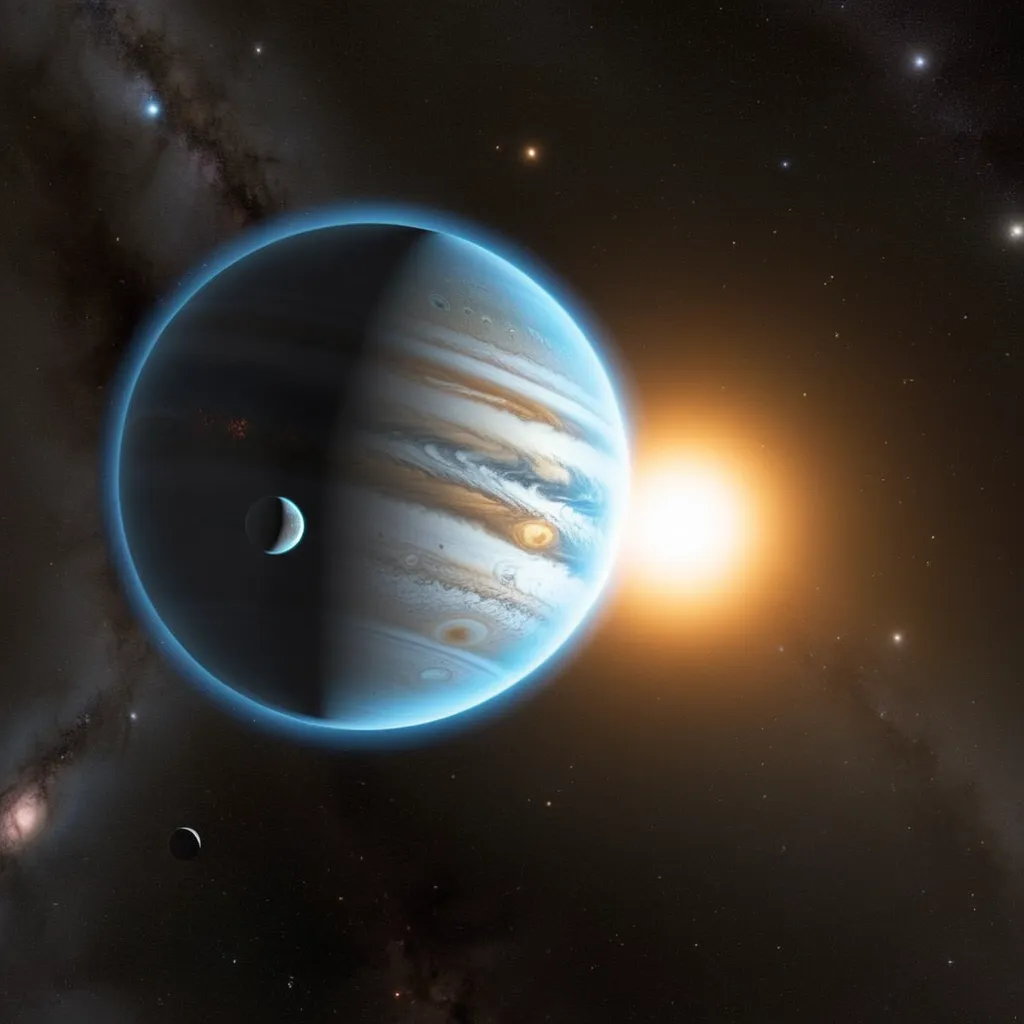Hubble Telescope Makes Exciting Discovery: Detects Water Around Small, Hot, and Steamy Exoplanet
Using the Hubble Space Telescope, astronomers have made a groundbreaking discovery, detecting a rich presence of water vapor in the atmosphere of a relatively small exoplanet outside our solar system. However, don't plan a vacation to this destination just yet— the planet's surface is scorching, hot enough to melt lead, rendering it an inhospitable, steamy world for life as we know it.

More specifically, the team behind this finding reveals that the extra-solar planet, named GJ 9872d, showcases Venus-like temperatures of 752 degrees Fahrenheit (400 degrees Celsius). Despite its extreme conditions, the Hubble Telescope's observations of this hot and steamy world represent a significant discovery, marking GJ 9827d as the smallest exoplanet around which water vapor, a vital element for life, has been found so far.
Laura Kreidberg, a team member and director of the Max Planck Institute for Astronomy's Atmospheric Physics of Exoplanets department, emphasizes the excitement of this discovery, stating, "The discovery of water on GJ 9827d is exciting because it’s the smallest planet yet where we've detected an atmosphere." This discovery brings scientists closer to characterizing truly Earth-like worlds.
GJ 9827d is approximately twice as wide as Earth and orbits a star named GJ 987, situated around 97 light-years away in the constellation of Pisces. It is one of three Earth-like worlds orbiting this star, believed to be around 6 billion years old.
Björn Benneke, a team member and scientist at the Trottier Institute for Research on exoplanets at Université de Montréal, expresses the significance of this discovery, saying, "This is an important step toward determining the prevalence and diversity of atmospheres on rocky planets."
However, a major question remains—what type of planet is GJ 9872d? Kreidberg mentions the uncertainty surrounding small-ish planets, which are two to three times the size of Earth. They could be true super-Earths with a large rocky core and a light atmosphere, or they could be something entirely different, resembling a water world predominantly made from water ice with no analog in our solar system.
The Hubble observed GJ 9827d for three years, witnessing the planet transit its star 11 times. By analyzing the absorption of light at characteristic wavelengths as it passed through the exoplanet's atmosphere, the astronomers aim to determine the composition of its atmosphere.
The nature of GJ 9872d's atmosphere remains uncertain. Pierre-Alexis Roy, the research lead author and a scientist at the Trottier Institute for Research on Exoplanets at Université de Montréal, emphasizes the excitement of either result, whether water vapor is dominant or just a small component in a hydrogen-rich atmosphere.
If GJ 9872d has spent its 6 billion-year lifetime close to its parent star, intense radiation should have stripped away any primordial hydrogen, leaving the planet with an atmosphere dominated by water vapor. Attempts to detect hydrogen around GJ 9872d have so far failed, supporting this hypothesis.
Alternatively, if GJ 9872d still retains a hydrogen-rich envelope laced with water, it would be categorized as a mini-Neptune, a planet less massive than Neptune but with a thick atmosphere of hydrogen and helium.
Another possibility is that GJ 9872d resembles a larger and hotter version of Jupiter's moon Europa, believed to host twice as much water as Earth beneath a thick icy crust. Benneke suggests, "The planet GJ 9827d could be half water, half rock, with a lot of water vapor on top of some smaller rocky body."
If GJ 9827d maintains a thick atmosphere of water vapor, it suggests that it was born farther from its star, where temperatures were lower, before migrating to its current position. This migration would have subjected the exoplanet to increased radiation, transforming potential ice into liquid water and water vapor, and any present hydrogen would have heated, possibly leaking from the planet's atmosphere due to its relatively low gravity, which could still be occurring today.

Benneke adds, "Until now, we had not been able to detect the atmosphere of such a small planet directly, and we're slowly getting into this regime now. At some point, as we study smaller planets, there must be a transition where there's no more hydrogen on these small worlds, and they have atmospheres more like Venus, dominated by carbon dioxide."
The study of GJ 9827d with the Hubble has designated the planet as a prime target for a follow-up investigation conducted with the James Webb Space Telescope (JWST), a $10 billion telescope capable of providing more details about this potential water world.
"GJ 9827d is being observed with JWST to learn more about its atmospheric composition and search for additional molecules like carbon dioxide," concludes Kreidberg. "Observations are ongoing, and we'll have more answers soon! Hopefully, we can now settle the question of water worlds once and for all."<

No comments:
Post a Comment